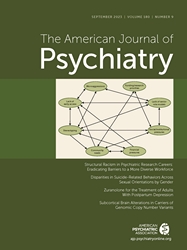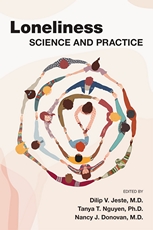Recognition and Prevention of Major Mental and Substance Use Disorders
View Pricing
Description
Recognizing that favorable clinical outcomes are associated with earlier initiation of treatment—and even more ideally with prevention—this volume addresses the current status of early intervention in, and prevention of, major mental and substance use disorders. A team of distinguished participants addresses this problem at many levels—from the DNA molecule to public policy—in order to show how prevention efforts should be informed by a better understanding of etiology and by a knowledge of indicators of vulnerability.
In considering the current standing of etiological knowledge, Recognition and Prevention of Major Mental and Substance Use Disorders addresses issues that are critical precursors to the prevention of mental disorders and offers an understanding of factors that contribute to the disorders' development. The contributors review genetic methodologies and current findings in mental disorders, with an emphasis on schizophrenia, and then show how biological and psychosocial environmental variables may affect vulnerability. Chapters devoted specifically to lessons in prevention drawn from recent research into schizophrenia discuss the implications of prodromal studies and relationships between stress, critical periods, and the development of the disorder. The book includes contributions from NIH representatives on how basic scientific understanding of mental disorders can be translated into public policy. It also features chapters that describe cutting-edge projects in prevention research for Alzheimer's disease, drug dependence, antisocial behavior, and posttraumatic stress disorder—each providing compelling accounts of how existing knowledge can be adapted to promising prevention efforts. Among the volume's contributions:
- New data on the role of substance abuse—particularly marijuana and psychostimulants—in increasing vulnerability to schizophrenia
- Review of vulnerability factors for several relevant disorders, examining stress and its concomitant psychobiological responses and the contribution of cognitive factors to vulnerability to depression
- Intriguing approach for translating successful treatment methods for schizophrenia into efforts to prevent the transition from the prodrome of the disorder to the full-blown illness
- Program for prevention of antisocial behavior that can be implemented as early as the first grade
- Secondary prevention efforts for posttraumatic stress disorder, with a focus on pharmacological interventions
Each chapter reviews clinical implications of the research presented, contributing to a volume that will benefit clinicians and researchers who share the goal of preventing these debilitating conditions. This multidimensional, interdisciplinary work represents a major step toward cutting the social costs of these disorders—and, more important, their untold cost in human suffering.
Contents
- Contributors
- Introduction
- Part I: Etiology of Major Mental and Substance Use Disorders
- Chapter 1. Genetic Risk Factors for Mental Disorders: General Principles and State of the Science
- Chapter 2. Environmental Determinants of Psychosis: A Focus on Drug Abuse
- Chapter 3. Social Environment and Psychiatric Disorders: A Historical Review Presented on Receipt of the Paul H. Hoch Award
- Part II: Vulnerability to Major Mental and Substance Use Disorders
- Chapter 4. Psychobiology of Resilience to Stress: Implications for Prevention of Anxiety
- Chapter 5. Cognitive Vulnerability to Depression: Implications for Prevention
- Chapter 6. Vulnerability to Alcohol and Drug Use Disorders
- Part III: Prevention: Lessons From Schizophrenia
- Chapter 7. Treatment of the Schizophrenia Prodrome
- Chapter 8. Adolescent Neurodevelopment: A Critical Period for Preventive Intervention
- Chapter 9. Toward Prevention of Schizophrenia: Early Detection and Intervention
- Part IV: NIH Perspectives on Prevention
- Chapter 10. Prospects for the Prevention of Mental Illness: Integrating Neuroscience and Behavior
- Chapter 11. Drugs and Alcohol: Treating and Preventing Abuse, Addiction, and Their Medical Consequences
- Chapter 12. Alcoholism: Developmental Patterns of Drinking and Prevention of Alcohol Use Disorders
- Part V: Challenges for the Near Future
- Chapter 13. Prevention of Alzheimer's Disease: Principles and Prospects
- Chapter 14. Five Facts About Preventing Drug Dependence
- Chapter 15. Prevention of Aggressive Behavior Through Middle School Using a First-Grade Classroom-Based Intervention
- Chapter 16. Conceptually Driven Pharmacological Approaches to Acute Trauma
- Index
Contributors
- Lyn Y. Abramson, Ph.D.
Lauren B. Alloy, Ph.D.
James C. Anthony, Ph.D.
Andrea Auther, Ph.D.
Cheryl A. Boyce, Ph.D.
John C. S. Breitner, M.D., M.P.H.
C. Hendricks Brown, M.D.
Dennis S. Charney, M.D.
Alex Cogswell, M.A.
Barbara A. Cornblatt, Ph.D.
Douglas L. Delahanty, Ph.D.
Stephen V. Faraone, Ph.D.
Courtney B. Ferrell, Ph.D.
Carla Ford, Ph.D.
Stephen J. Glatt, Ph.D.
Deborah Hasin, Ph.D.
Mark L. Hatzenbuehler, B.A.
Robert Heinssen, Ph.D.
Brenda G. Hewitt, B.A.
Megan E. Hughes, M.A.
Brian M. Iacoviello, M.A.
Nick Ialongo, Ph.D.
Kathryn A. Keegan, B.A.
Sheppard G. Kellam, M.D.
Katherine Keyes-Wild, M.S.
Todd Lencz, Ph.D.
Ting-Kai Li, M.D.
Michael J. Lyons, Ph.D.
Amanda McMillan, B.A.
Vijay Mittal, M.A.
Jane M. Murphy, Ph.D.
Robin M. Murray, D.Sc., F.R.C.Psych.
Richard K. Nakamura, Ph.D.
Antonia S. New, M.D.
Owen G. O'Daly, M.Sc.
Elizabeth Ogburn, M.S.
Roger K. Pitman, M.D.
Jeanne Poduska, Sc.D.
Armin Raznahan, M.B.B.S.(Hons), M.R.C.P.C.H., M.R.C.Psych.
Christopher Smith, M.A.
William S. Stone, Ph.D.
Kevin Tessner, M.A.
Hanan Trotman, B.A.
Evangelina Maria Tsapakis, B.Sc.(Hons), M.B.B.S., M.R.C.Psych.
Ming T. Tsuang, M.D., Ph.D., D.Sc.
Nora D. Volkow, M.D., Ph.D.
Elaine F. Walker, Ph.D.
Ellen Witt, Ph.D.
About the Authors
Ming T. Tsuang, M.D., Ph.D, D.Sc., is University Professor at the University of California; Distinguished Professor of Psychiatry and Director of the Center for Behavioral Genomics in the Department of Psychiatry at the University of California, San Diego, in La Jolla; Adjunct Professor and Director of the Harvard Institute of Epidemiology and Genetics in the Department of Epidemiology at the Harvard School of Public Health in Boston, Massachusetts; and Senior Lecturer at the Massachusetts Mental Health Center Academic Division of Public Psychiatry, Department of Psychiatry, Beth Israel Deaconess Medical Center, at Harvard Medical School in Boston, Massachusetts.
William S. Stone, Ph.D., is Assistant Professor of Psychology in the Department of Psychiatry at Massachusetts Mental Health Center Academic Division of Public Sector Psychiatry; Assistant Professor in the Department of Psychiatry at Beth Israel Deaconess Medical Center; and Harvard Medical School Training Coordinator at the Harvard Institute of Psychiatric Epidemiology and Genetics in Boston, Massachusetts.
Michael J. Lyons, Ph.D., is Professor and Director of Clinical Programs in the Department of Psychology at Boston University; and Chief of Twin Studies at the Harvard Institute of Psychiatric Epidemiology and Genetics in Boston, Massachusetts.
Related Products
Carousel Control - items will scroll by tabbing through them, otherwise arrows can be used to scroll one item at a time








